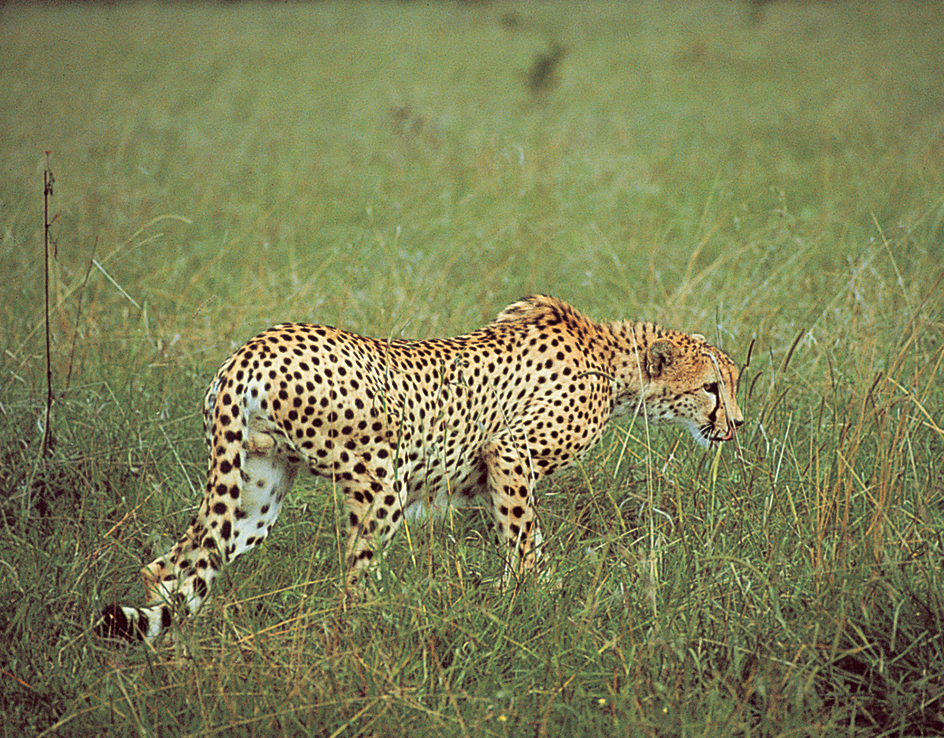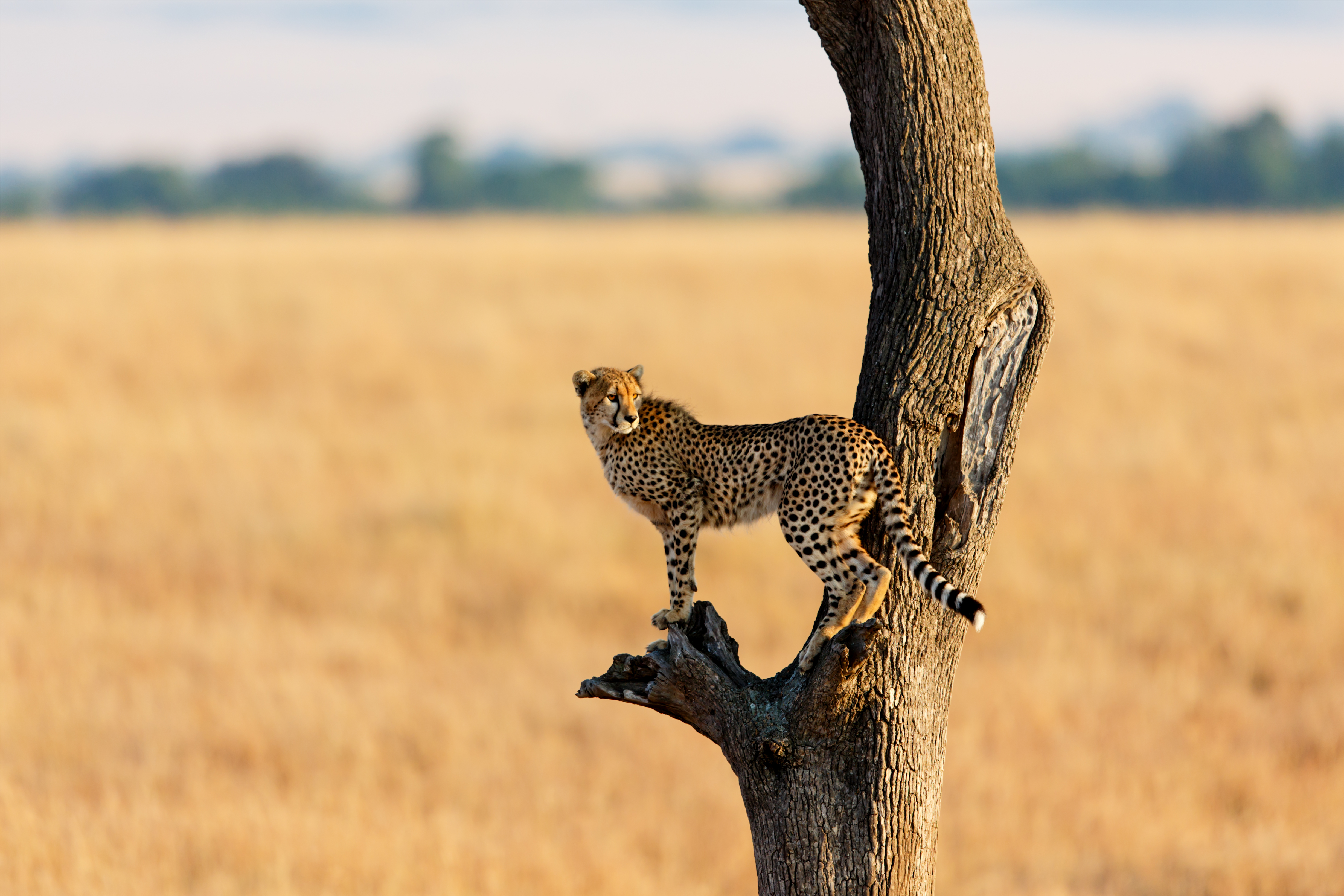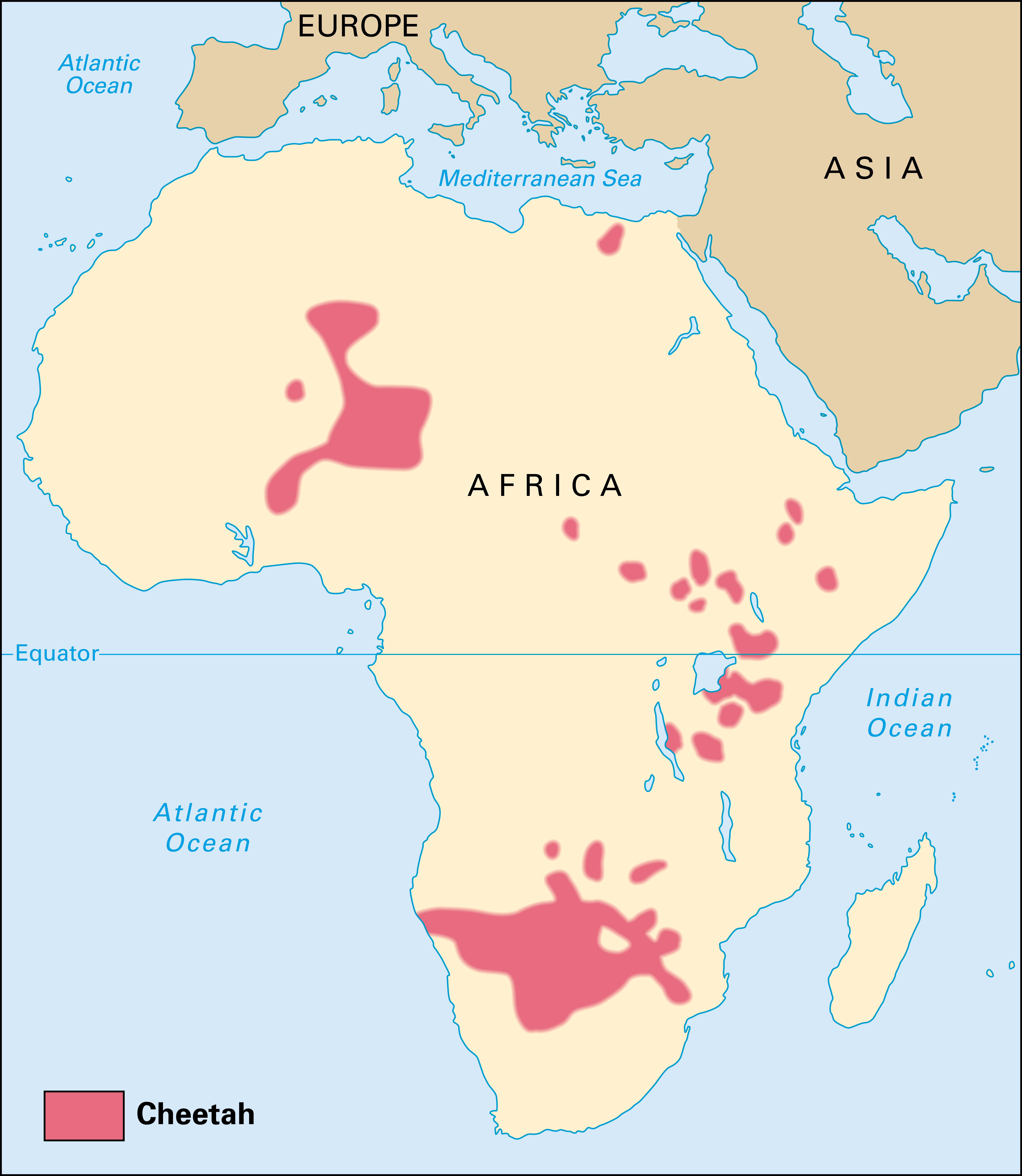Cheetah is a large cat chiefly found on the grassy plains of eastern and southern Africa. It is the fastest land mammal over short distances. Cheetahs can run at a top speed of 50 to 70 miles (80 to 110 kilometers) per hour. But they can maintain this speed for only a few hundred yards or meters.
Body.
The cheetah has a slender body, long legs, and a small head. An adult cheetah stands 30 to 36 inches (75 to 90 centimeters) tall at the shoulder and weighs 77 to 143 pounds (35 to 65 kilograms). The animal measures about 6 to 7 1/2 feet (1.8 to 2.3 meters) in length, including the tail. Males generally are larger than females. The cheetah has a yellowish-brown coat with black spots, except for the throat and underparts, which are white to yellowish-white with black spots.

Life.
In eastern Africa, adult female cheetahs usually live alone unless they have cubs. Adult males live alone or with one to three other males, usually brothers. Cheetahs in southern Africa may live in larger groups that contain more than one adult female.
Loading the player...Cheetahs
Male and female cheetahs may mate at any time of year. Several males may fight over a potential female mate. After mating, the male remains with the female for a day or two. He then leaves and does not help raise the young.
After a pregnancy of about three months, the female gives birth to an average of three to five cubs. Many cheetah cubs die during their first three months of life. They typically are killed by lions, hyenas, and birds of prey. The surviving cheetah cubs remain with the mother about 14 to 18 months. During this time, they learn to hunt.

Cheetahs usually hunt by day. They commonly attack medium-sized mammals, particularly small or young antelope. The cheetah uses its great speed to run down prey after stalking close to it.
Survival problems.
Cheetahs once inhabited grassy plains throughout Africa and across the Middle East into central Asia and India. Since the early 1900’s, their numbers have declined rapidly. This decline has occurred chiefly because people have hunted the cheetah for its pelt and have converted much of the animal’s grassland habitat into farming and manufacturing areas. Biologists estimate that only 6,000 to 7,000 cheetahs remain in the wild.
Loading the player...
Cheetah chasing prey

Many biologists think that cheetahs narrowly escaped extinction about 10,000 years ago. Although the species survived, inbreeding among the few remaining individuals may have led to a loss of genetic diversity. As a result, cheetahs suffer from inherited genetic problems, such as low fertility.
Cheetahs are bred in captivity to try to preserve their remaining genetic variation. Captive cheetahs have been released into the wild, but many have died soon after release. Biologists and conservationists work to understand how to better prepare captive cheetahs for life in the wild.
